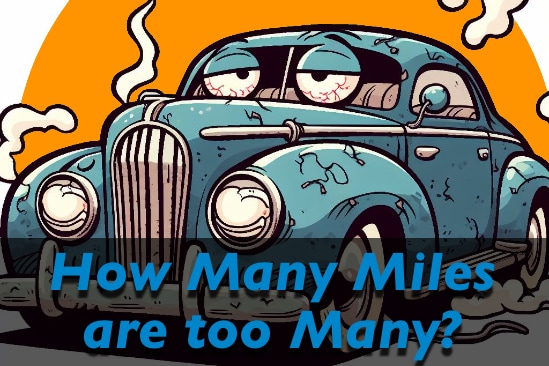
When searching the used car market you can quickly run into great looking vehicles that are approaching – or well past – the dreaded 100,000-mile mark. There's a lingering fear surrounding high-mileage vehicles, a kind of urban legend that whispers of imminent engine failure the moment that sixth digit clicks over. But, what if we told you this fear is largely based on, well, dated data? Dramatic advancements in engineering and materials over the decades have increased performance and reliability across the board. With this in mind, let’s explore the commonly asked, “How many miles are too many for a used car?”
Busting the 100,000-Mile Myth
Many people worry a car's engine or transmission will just give out at 100,000 miles.. The focus on these costly failures make sense, of course, though much of this is based on stories that are continuously echoed from the past. Let’s look at improvements that have been made to extend the life of modern vehicles:
Engine Improvements
-
Electronic engine management: Modern engines rely on sophisticated computer controls that optimize fuel injection, ignition timing, and other factors. This precise control minimizes wear and tear and improves fuel efficiency.
-
Synthetic and semi-synthetic oils: These advanced lubricants offer superior performance compared to traditional motor oil. They provide better protection against friction and extreme temperatures, extending engine life.
-
Improved engine materials: Advances in metallurgy have led to the development of stronger, more wear-resistant components like pistons, rings, and bearings. These materials can withstand higher loads and temperatures for longer periods.
-
Engine block design: Modern engine blocks are designed with better cooling systems and improved oil circulation, ensuring optimal engine temperature management for longevity.
Transmission Improvements
-
Automatic transmission advancements: Automatic transmissions have become more sophisticated, with features like multi-speed gearboxes and electronically controlled gear changes. These features reduce wear and tear and improve fuel efficiency.
-
Advanced transmission fluids: Similar to engine oil, automatic transmission fluids have seen advancements. They offer better lubrication and protection against wear, extending transmission lifespan.
-
Sealed transmissions: Modern transmissions are often sealed units, reducing the risk of contamination and leaks, which can significantly impact their lifespan.
These improvements, in combination with proper maintenance practices, have led to a dramatic increase in the expected lifespan of both engines and transmissions. Many modern engines and transmissions, with proper care, can easily reach 200,000 miles and more!
The truth is, there's no magic "too many miles" number. A well-maintained car with 150,000 miles can be a better buy than a neglected car with half that amount. Let’s look at how this can happen.
Miles Are Just One Piece of the Puzzle
Think of miles as a car's age on paper. But just like people, cars age differently. Here's what matters more:
-
Maintenance History: A stack of service records is gold! It shows the car received regular oil changes, tune-ups, and any necessary repairs. This TLC extends a car's life dramatically.
-
Driving Conditions: Highway miles are easier on a car than constant stop-and-go city traffic. Ask the seller where the car was primarily driven.
-
The Car Itself: Some car models are known for their longevity. Research the specific car you're interested in to see what owners report.
The bottom line is that though mileage is a factor, it shouldn't be the only one. By considering maintenance history, driving conditions, and the car's reputation for reliability, you can still find a gem that will serve you well even after rolling past the six-digit mark on the odometer.